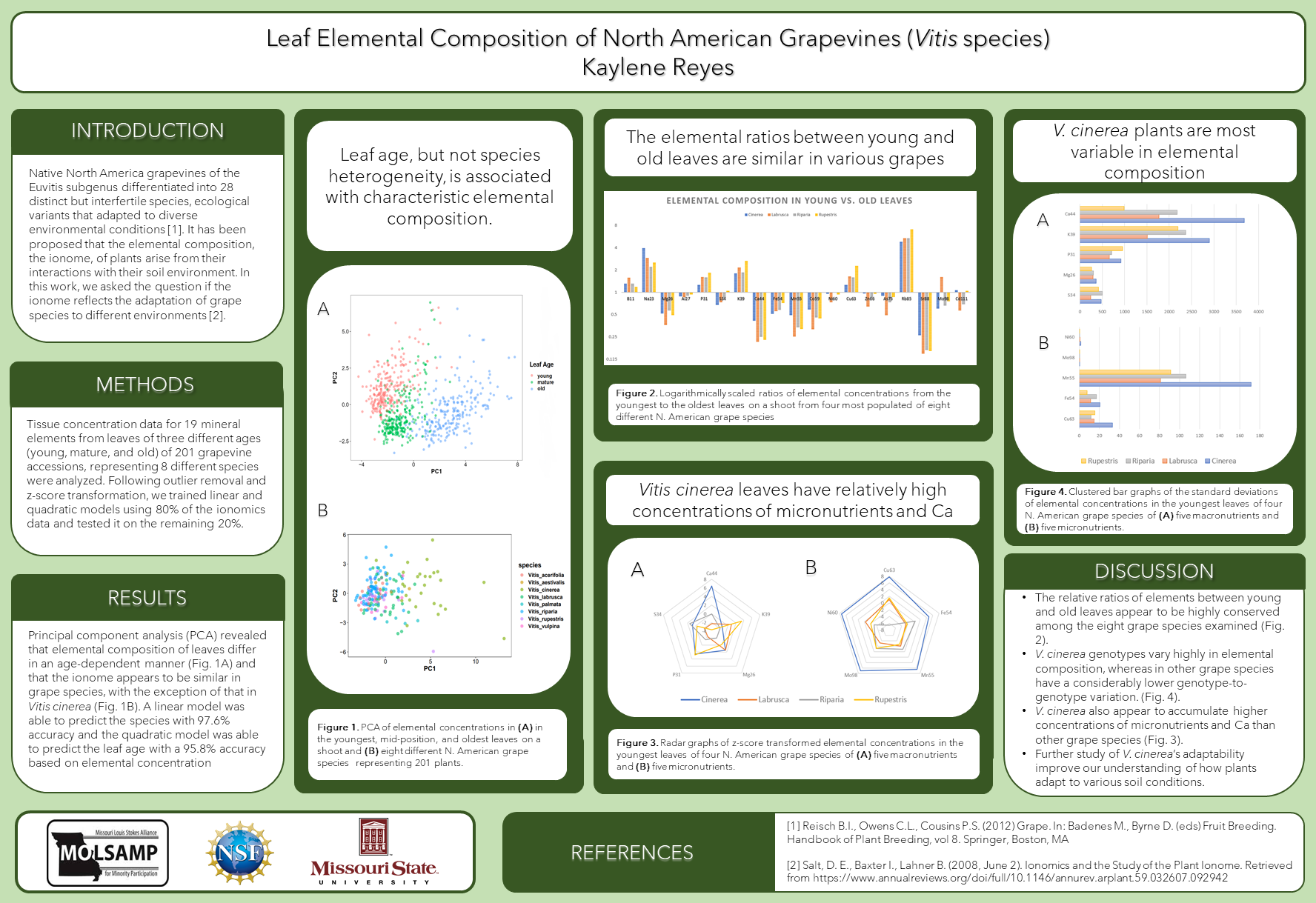Kaylene Reyes
Leaf Elemental Composition of North American Grapevines (Vitis species)
Kaylene Reyes
Native North America grapevines of the Euvitis subgenus differentiated into 28 distinct but interfertile species, ecological variants that adapted to diverse environmental conditions. It is thought that the elemental profile, the ionome, of plants arise from their interactions with their soil environment. We asked the question if it was possible to identify distinct elemental profiles that were characteristic of various grapevine species. To accomplish this, we collected tissue concentration data for 19 mineral elements from leaves of three different ages (young, mature, and old) of 201 grapevine accessions, representing eight different species at the USDA Grapevine Germplasm Repository. Following outlier removal and z-score transformation, we performed various statistical analyses. Based on our analysis, Vitis cinerea had a considerably greater intraspecific variation than the other seven species. We trained linear and quadratic models using 80% of the ionomics data (randomly partitioned) and tested it on the remaining 20% of the data. The linear model was able to predict the species or the F1 hybrid cohort based on the ionomics profile with 97.6% accuracy. The quadratic model was able to predict the leaf age based on the ionomics with a 95.8% accuracy. These results suggest that each Vitis species has evolved to have a distinct way to interact with the soil and to take up mineral nutrients.
